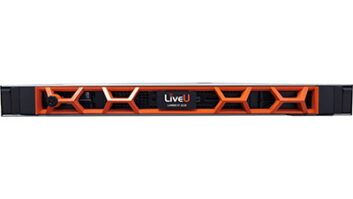
To move to Ultra HD, almost every bit of the production chain has to adapt to the new standards. Miranda handles a wide range of the connectivity equipment that glues broadcasting together, and now supports 4K with its camera-back transceivers, routing switchers, up/down-converters, multiviewers and distribution equipment, and is “fully committed to 4K UHDTV’, according to its CTO, Core Products, Chuck Meyer (pictured).
“We have been working with Sony, Telegenics and Euro Media France on their 4K UHDTV trial deployments and demonstrations with routers, downconverters and other 4K UHDTV-ready products. However, challenges remain. Manageable challenges, but challenges nonetheless,” he said.
“Perhaps the biggest hurdle to the near-term introduction of 4K UHDTV is the fact that 4K UHDTV signals cannot be delivered by existing Multichannel Video Programming Distribution plants. There is also a need to establish new methods to deliver 4K UHDTV via broadcast, satellite, cable, IPTV and OTT to a PC or set-top box. The latter will require next-generation development because existing units cannot currently handle 4K UHDTV content.”
Standards (both professional and consumer) also “need to evolve, stabilise and be widely adopted.” Miranda has been actively participating in the standards bodies, and he believes that many of them have now solidified enough for manufacturers to confidently create a UHDTV product portfolio.
Probably the most important is the HEVC video compression format for distribution to the home. However, it “will require the development of new delivery mechanisms, but those are not far away at all.”
What’s the deal?
While Miranda is 4K ready today, there are other things that the industry has to deal with, some of which are more emotive than practical. “For example, the majority of consumers have already purchased digital HD television sets. Will they fork out again for 4K UHDTV?,” he asked.
“In the UK, although the average size of TV screens in the home is projected to climb steadily upwards, the average screen size today is still just over 36 inches. While 4K UHDTV undoubtedly produces a stunningly rich picture, by the time that information is compressed and delivered to a 36- or 42-inch diagonal screen, how much of an improvement over standard HD will actually be noticeable? Will it be enough to compel consumers to pay, again, for the televisions and set top boxes that can deliver 4K UHDTV? That may be easier to assess in the US, where the available square footage in homes tends to be considerably larger than European counterparts. There is a better chance that there is room to sit 10-15 feet [3-4.5m] away from a 60-inch, 4K UHDTV enabled set, fully appreciate the quality, and boost sales. Will that be enough to drive 4K UHDTV acceptance down to homes with more restricted real estate? Time will tell,” he said.
“Another issue – notwithstanding the Japanese government’s announcement of plans to begin 4K UHDTV broadcasting in the summer of 2014 – is that without clear, government-led mandates to move to 4K UHDTV, the sense of urgency that accompanied the transition to digital and, hence, HD, is missing. Without a driving force to ‘Go 4K’, a sense of uncertainty about when, or even if, to make the transition will linger,” he added.
However, he is ultimately optimistic about the future for UHD. “Make no mistake, irrespective of the remaining technical hurdles or the ultimate timing of consumer take-up (many television retailers already have 4K UHDTV displays on the showroom floor), 4K UHDTV is going to happen and it’s going to happen sooner than anyone anticipates,” he said.
4K is Copper-bottomed
One of Miranda’s main UHD-enabled products is its new CopperHead 3404K camera-mountable transceiver, which needs only two strands of fibre optic cable to carry all bi-directional 4K production signals from camera to truck or control room (it can also be used for 3D).
Its enhanced, enterprise-class NVISION 8500 Hybrid Routers are optimised with SMPTE RP-168-compliant, quad-link 3Gbps switching to efficiently handle 4K links. Miranda also has a wide range of 4K UHD-enabled, hybrid audio/video switching and processing modules.
The Densité 4K UHDTV-to-3G downconverter enables 4K signals to be downconverted to HD 1080/50p and 1080i/50i to be fed to standard HD/3Gbps multiviewers, not only for monitoring purposes but to enable UHD-originated images to be integrated into a standard HD broadcast.
Its Kaleido-MX multiviewers enable any 4K signal to be viewed at any time.
By David Fox
www.miranda.com







